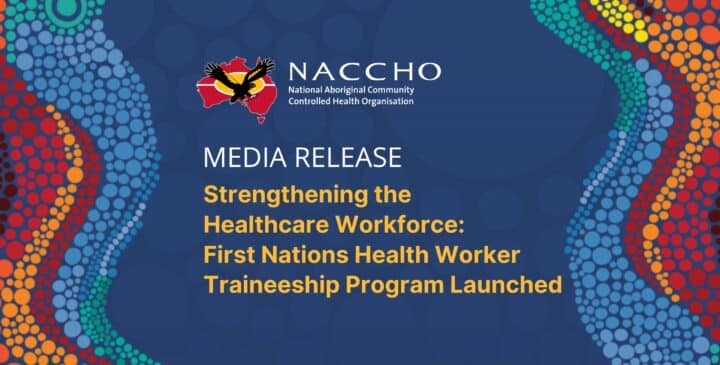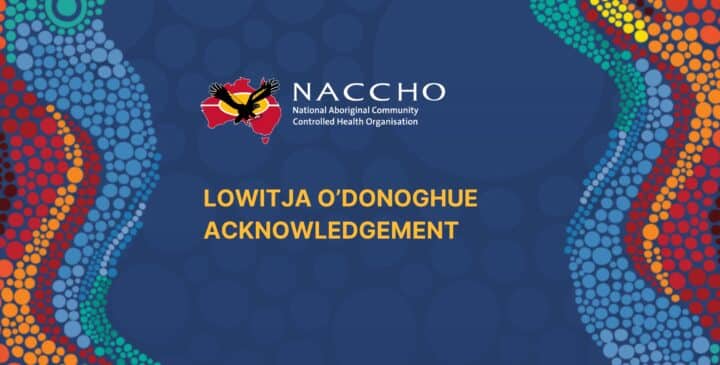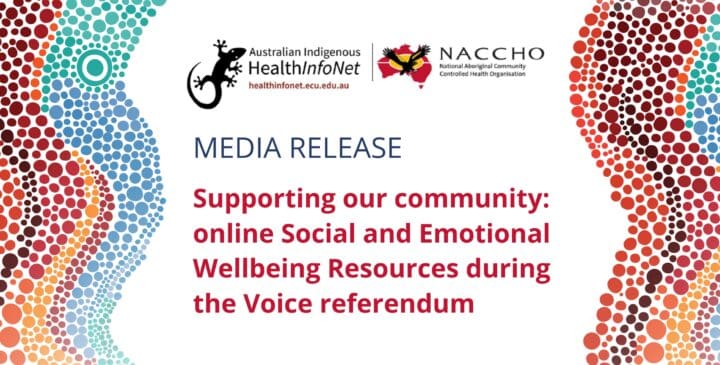

Garma 2019 – Pat Turner Presentation
There is a long way to go yet before we get agreement.
Governments, particularly the Commonwealth, remain determined to pursue
draft targets agreed to by COAG last December whereas we want to get the focus
on the reform priorities and their implementation.
Of most
concern is that no government has so far been prepared to put new funding on
the table. We need new funding from all
Governments to support the new Agreement and supports the reform priorities in
particular.
Nonetheless,
I remain optimistic that we can achieve our goal and I seek the support of
everyone here today for our mission.
More than anything that is to turn Closing the Gap from a negative
feature of our politics of the day to a positive one.
Pat Turner CEO NACCHO
I want to
thank Yothi Yindi for inviting me to this great event on Gumatj land and to
start by acknowledging their elders, past and present.
In
particular, can I pay my respects to Galarrwuy who has led his people for nearly
a generation and has been able to achieve a number of important outcomes. They include agreements for the Gumatj to
mine bauxite themselves and even to build a rocket launching pad!
Us Arrernte people
have just agreed to a US multinational building a ground station to receive
data from satellites on the site of the Centre for Appropriate Technology in
Alice Springs.
It makes me
proud that it is Aboriginal people from the Northern Territory leading the way
in developing a space industry in Australia.
This is very
relevant to the politics of the day which is meant to shape the discussion in
this session. I think all would agree
that Closing the Gap is an important feature of the politics of the day as far
as Indigenous issues are concerned.
Unfortunately,
however, it is largely a negative feature.
Every year, since Closing the Gap
started in 2008, successive Prime Ministers have reported to Parliament on how
most of the Closing the Gap targets are not on track to be achieved.
We have all
become used to this negative narrative, so much so that our achievements, such
as in the space industry are being overlooked.
The negative
narrative has made an almost an obsessive focus on the targets by successive
governments highly problematic for our people.
It is this
obsession with the targets which is the cause and has led to Closing the Gap
being a negative feature of the politics of the day for us.
I don’t
discount the need for targets, but we need to get a much greater focus on what
we know will work to make much more progress against them. If we
had a much greater focus on how to achieve the targets, I think the story of
Closing the Gap would be a positive one instead of a tale of woe!
This is a
good backdrop for me to brief you on the strategy of the Coalition of
Peaks. Made up of some 40 national and
state/territory peak organisations for Aboriginal and Torres Strait Islander
peoples, it is determined to turn Closing the Gap into a positive feature of
the politics of the day.
In October
last year, a group of us wrote to the Prime Minister, Premiers and Chief
Ministers to ask that the Council of Australian Governments not agree to a new
Closing the Gap framework and instead enter into a genuine partnership with
us.
To our great
surprise, the Prime Minister did ultimately agree to meet us and he agreed to
our proposition that COAG and the Peaks, on behalf of Aboriginal and Torres
Strait Islander peoples, enter into a formal partnership for the next phase of
Closing the Gap.
The
mainstream politics of the day at that time was dominated by the nearing
Federal election and the prospect that there would be a change of
government. Some said that the motive
for the Prime Minister to agree was to make sure that Indigenous Affairs was
not a negative issue for the Coalition in the lead up to the Election.
However,
after a surprise win, the Prime Minister has kept his word and as far as we
know remains committed to the formal partnership. I don’t think his agreement to a formal partnership
with us was about politics and I think he should be given credit.
We have made
historic progress since the COAG meeting of December 2018 which announced that
a formal partnership was to be entered into with representatives of Aboriginal
and Torres Strait Islander peoples to finalise the next phase of Closing the
Gap.
Of great
importance is that for the first time, initiated by us, COAG has signed up to a
formal partnership agreement with the peaks to share decision making in the
next phase of Closing the Gap. This is
the first time that COAG has done such a thing and if you haven’t seen the
Partnership Agreement, I invite you to review it on the COAG website.
The
Agreement sets up a Joint Council on Closing the Gap which comprises 12
representatives of the Peaks and 9 government representatives to share decision
making. This is also the first time that
a COAG ministerial council has included non-government members. It is
co-chaired by Minister Wyatt and I and it has already had a successful meeting.
A
secretariat for the Peaks has also been funded for 3 years to enable us to
participate equally in implementing the Partnership Agreement and I also want
to thank the Federal Government for making this commitment.
With this
architecture that we have put in place, we want to find a way to achieve a real
partnership in the next phase of Closing the Gap which accelerates improvements
in life outcomes for our peoples. In
particular our goal is to stop this tale of woe around the targets.
Why we are
doing this goes to 3 simple propositions that all stakeholders publicly endorse:
1. When
Aboriginal and Torres Strait Islander peoples are included and have a real say
in the design and delivery of services that impact on them, the outcomes are
far better;
2. Aboriginal
and Torres Strait Islander peoples need to be at the centre of Closing the Gap
policy: the gap won’t close without our full involvement; and
3. The
Council of Australian Governments cannot expect us to take responsibility and
work constructively with them to improve outcomes if we are excluded from the
decision making.
To achieve
this, we have already secured agreement to negotiating a new COAG Agreement to
replace the National Indigenous Reform Agreement. This Agreement, signed by governments in
2008 as a result of the leadership of the Commonwealth, was ground-breaking.
It committed
all of the governments to working together to closing the gap and included an
integrated strategy and agreed roles and responsibilities and of course the
targets. Importantly, NIRA as it is
called, was accompanied by a new investment of $4.6 billion dollars in programs
and services to help achieve the targets.
NIRA,
however, had one significant failing and this was that Aboriginal and Torres
Strait Islander peoples, the beneficiaries of Closing the Gap, were not
parties. It also fell away in time as
all Governments, in the absence of any mechanism to ensure they fulfilled the
commitments, slowly forgot about NIRA.
That was a great shame and I believe COAG failed us in allowing NIRA,
despite still being in existence, to slowly be disregarded except for those
targets.
The
Coalition of Peaks believe we need a COAG Agreement to take us forward for the
next 10 years but this time around we need to be parties, not just governments,
we need to find a way to ensure compliance, through national legislation, and
we need to take the focus away from targets.
There is no
evidence that the targets drive change, and particularly in Closing the
Gap. Despite every year the annual report
from the Prime Minister reporting that most targets are not on track to be
achieved, I am still certain that COAG would have gone ahead and approved a new
Closing the Gap framework in December 2018, excluding us again, without the
intervention of the Coalition of Peaks.
Instead of
targets, we have put to the government representatives on the Joint Council
that the new Agreement should be underpinned by 3 reform priorities that we
think will accelerate the achievement of much better life outcomes for our
peoples.
Those 3
reform priorities are
- Supporting
the full involvement of Aboriginal and Torres Strait Islander peoples in shared
decision making at the national, state and regional level; particularly
embedding regional ownership, responsibility and expertise to close the gap; - Building
the formal Aboriginal and Torres Strait Islander community controlled services
sector in priority areas to deliver closing the gap services and programs; and - Undertaking
systemic and structural reform to mainstream institutions delivering services
to Indigenous peoples to provide much better services to our people.
So far, I
can advise that Governments have agreed to negotiating a new Agreement on
Closing the Gap to replace Closing the Gap by December this year and to also
examining the possibility of national legislation. They have also agreed in principle to the
reform priorities.
The
Coalition of Peaks also put to the Governments that we should lead an
engagement process to build support for the reform priorities and they have
agreed to this also. Starting in
September, leaders of the Peaks rather than public servants on behalf of
governments will be running a series of engagements across Australia and this
is the first time that Aboriginal people have been in the driver’s seat on
engaging our people on government policy.
However,
there is a long way to go yet before we get agreement. Governments, particularly the Commonwealth,
remain determined to pursue draft targets agreed to by COAG last December
whereas we want to get the focus on the reform priorities and their
implementation.
Of most
concern is that no government has so far been prepared to put new funding on
the table. We need new funding from all
Governments to support the new Agreement and supports the reform priorities in
particular.
Nonetheless,
I remain optimistic that we can achieve our goal and I seek the support of
everyone here today for our mission. More than anything that is to turn Closing the
Gap from a negative feature of our politics of the day to a positive one.
Thank you

